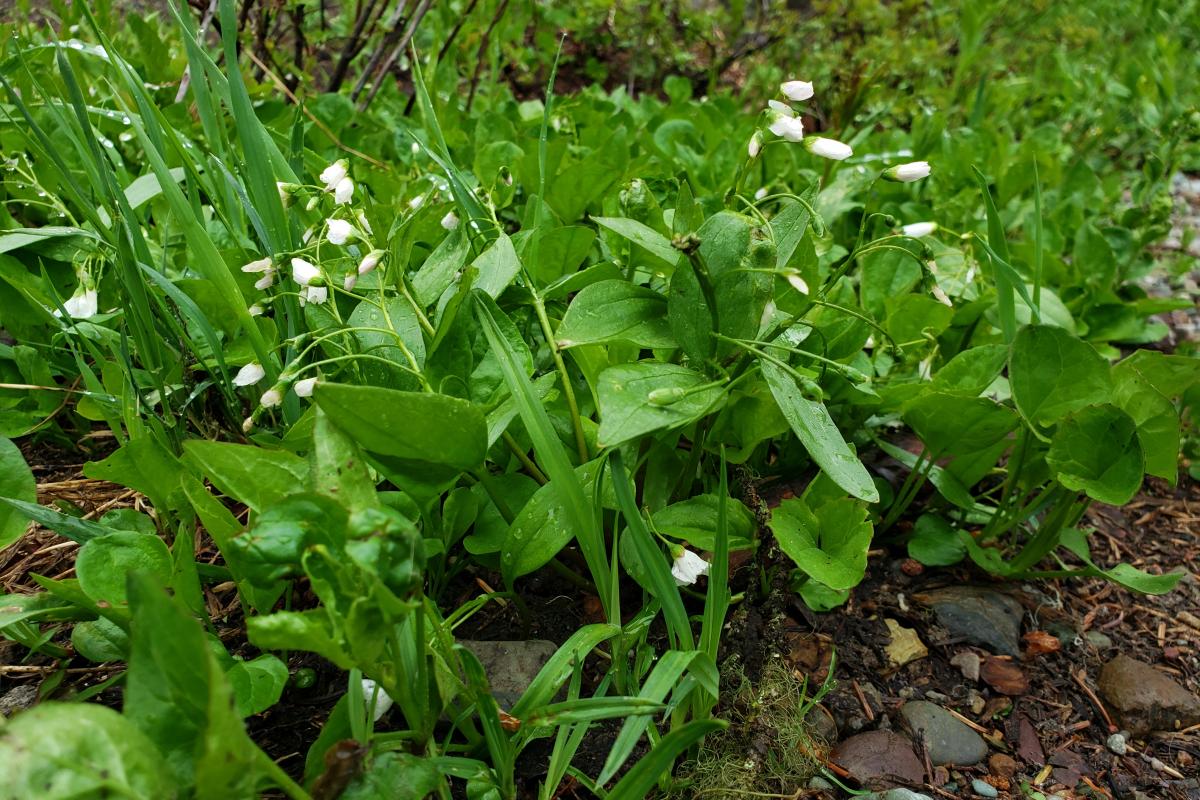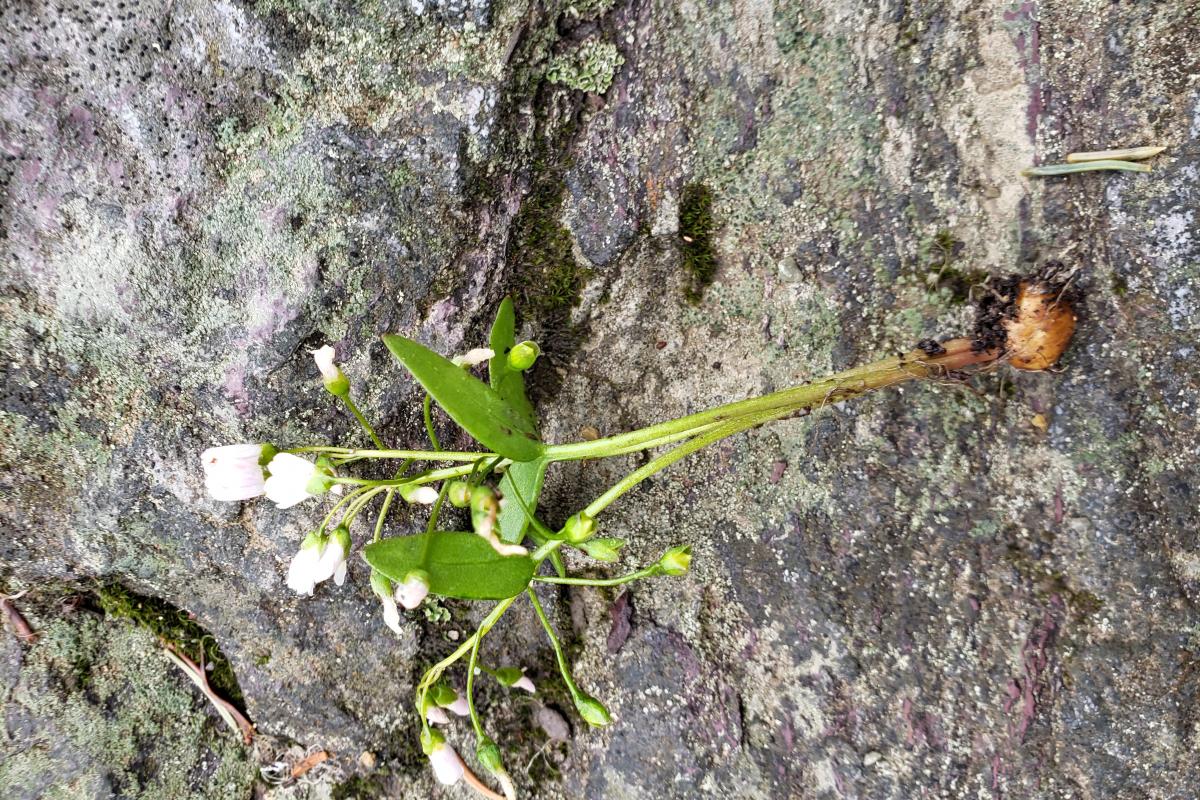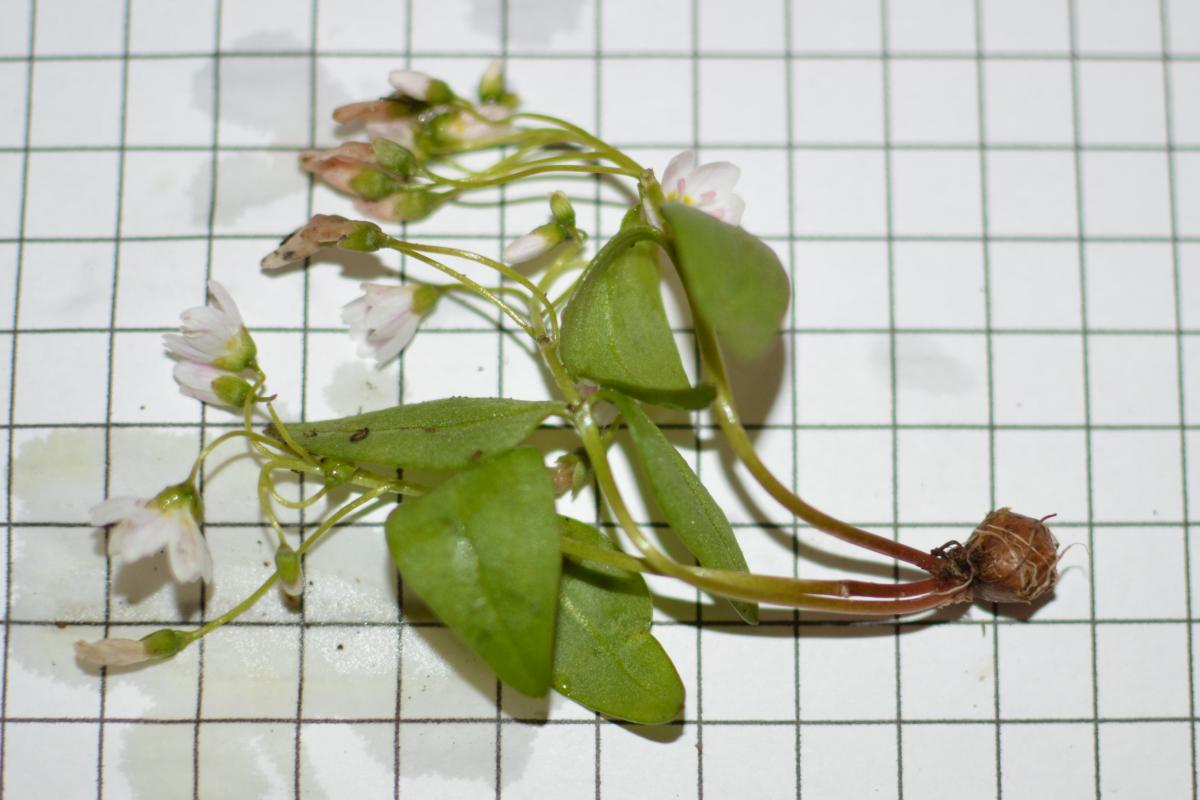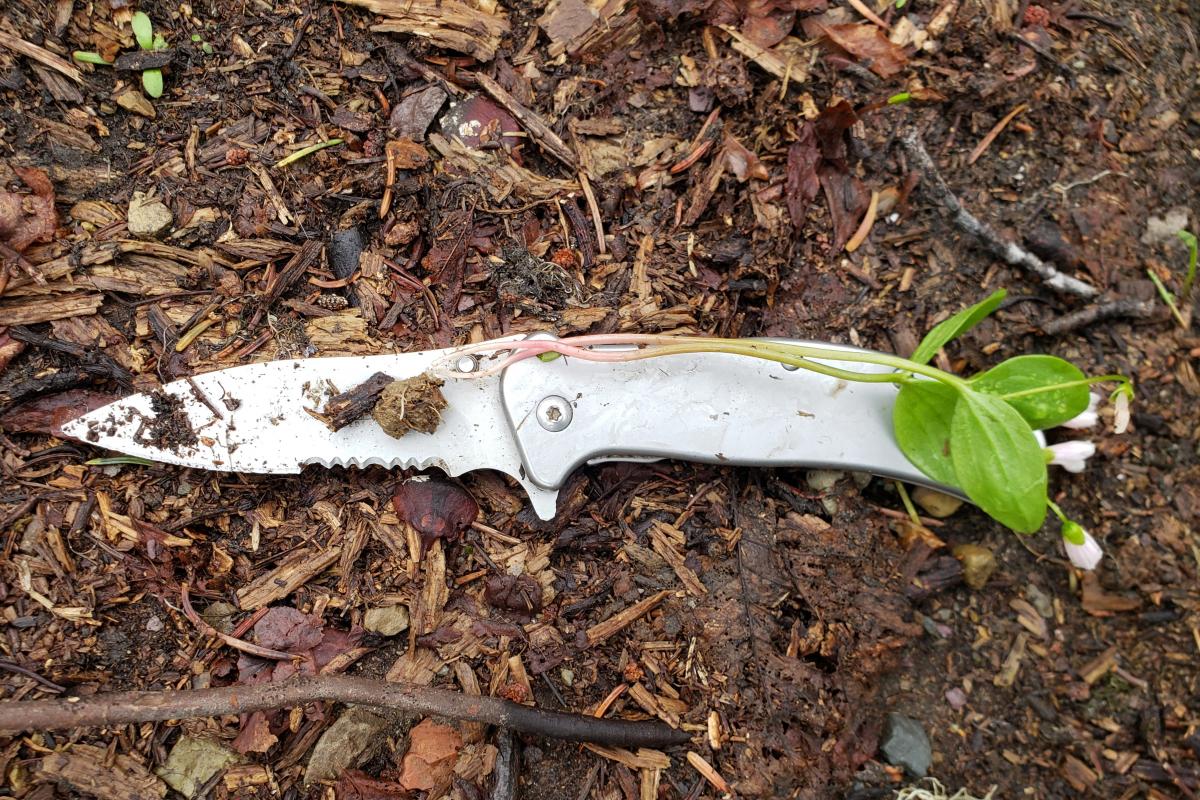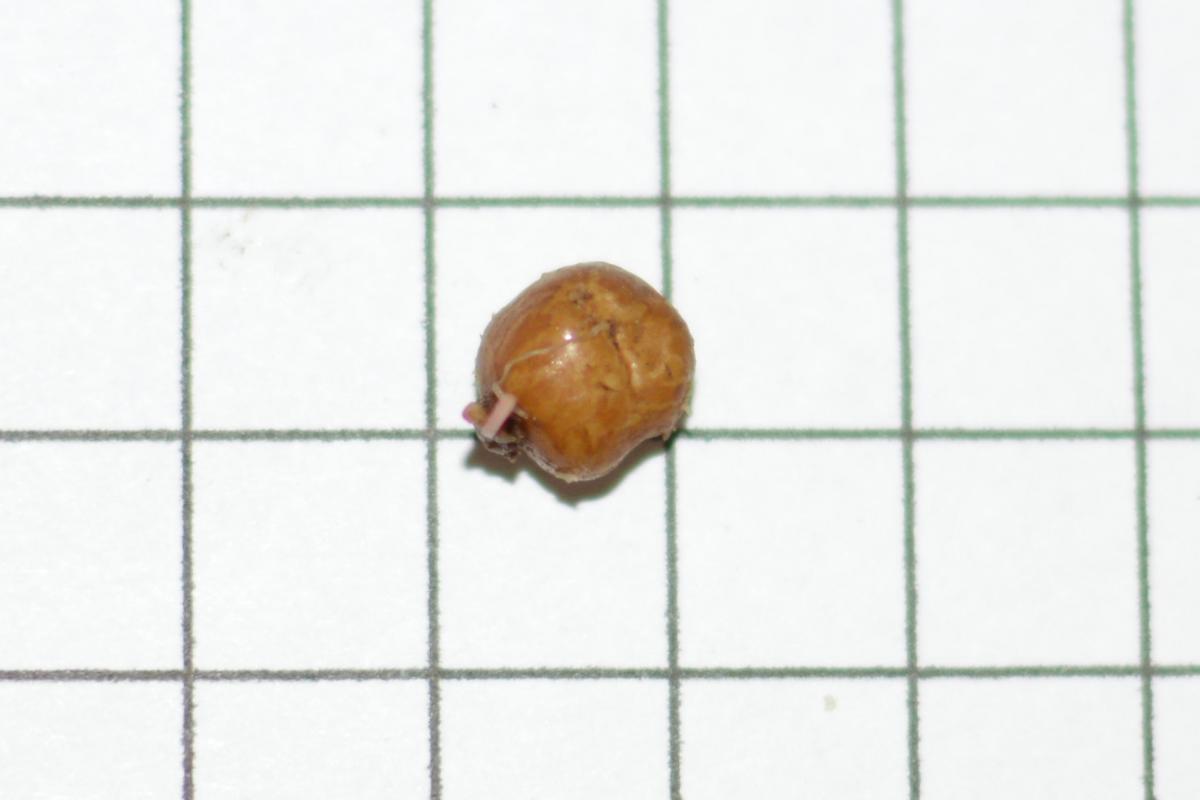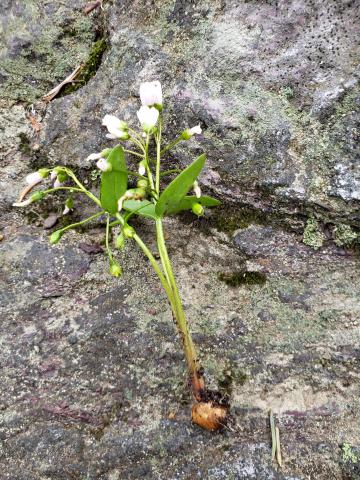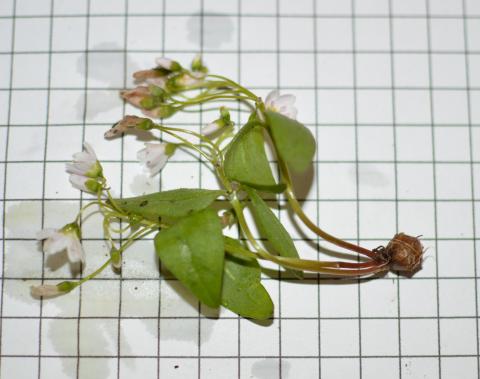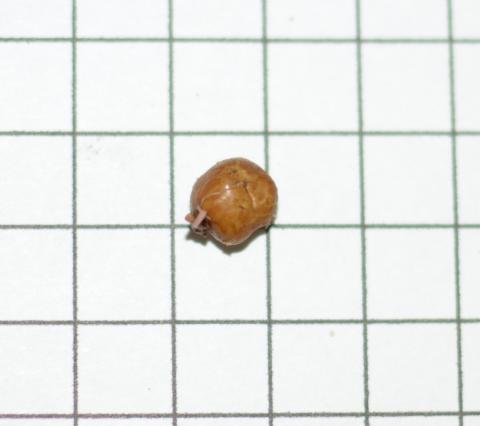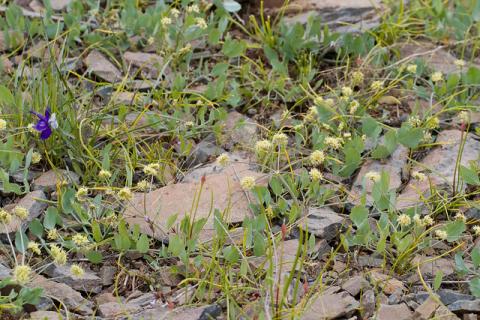Claytonia lanceolata
Claytonia lanceolata Pursh is an early flowering dicotyledonous perennial which grows from irregular shaped corms. The short (<5-20 cm) flower stalk bears a pair of stem leaves and short clusters of white to light pink five-petaled flowers. Older plants have larger corms which bear additional stems. Spring Beauty blooms early in spring, just as the snow melts.
Corms have a brown epidermis layer and ranges from “marble-sized” to 5 cm in diameter, with some rare corms up to 8 cm in diameter (Turner 2007:134). Spring beauty corms are almost completely spherical in shape and have roughly the same length (from stem node to root) and diameter.
Many interior Native Americans and First Nations groups in the more mountainous areas of the Plateau consumed these corms in great quantity, although they were considered an adventitious or ancillary part of the diet for groups residing in drier locales to the south. Corms were washed and steamed in underground pits or boiled (Teit 1928:56). Turner (2007:135) notes that spring beauty corms were sometimes cooked with yellowbell bulbs (Fritillaria affinis), or flavored with “Indian Celery” (Lomatium nudicaule). Fresh corms were sometimes stored like potatoes in lined earth pits, but could also be air dried and stored. They are said to taste like creamy potatoes.
Vernally moist open spaces and open forests at mid to high elevations.

